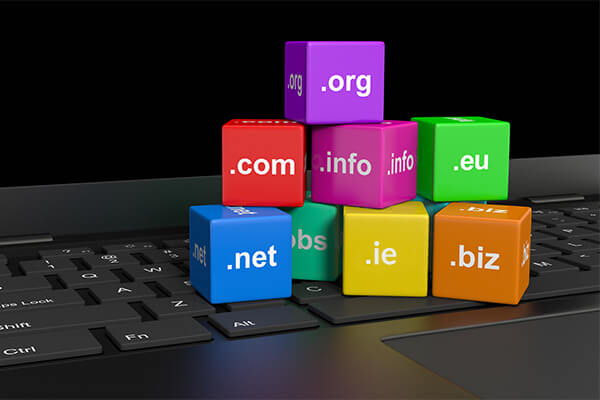The question of how buy now, pay later (BNPL) point-of-sale credit can migrate to B2B channels is a relatively new twist on a very old concept — net payment terms for business-to-business (B2B) purchases.
Perhaps debatably, B2B is the original BNPL use case. It’s still how most B2B purchases are made — net 30, 60, 90-day terms — so what does BNPL do to improve on this arrangement?
In a conversation with PYMNTS, Sam Graziano, EVP of Amount, gave a few compelling reasons, saying, “B2B spend is probably one of the biggest financial services markets in the world. It happens in-store, it happens through salespeople, it happens online, it happens cross border. Ultimately, what businesses want is cash flow flexibility. That can come in the form of what looks like a BNPL format similar to the consumer space,” but with key differences.
“I don’t know that you’re going to see a dominant player like a Klarna or an Affirm take over the business space … because the way business spend happens is just too big and varied,” he added.
Graziano isn’t a fan of having the “BNPL” sticker slapped on anything that offers flexible payment terms. However, he sees the value in innovating around the concept for B2B.
“I think that the term ‘buy now, pay later’ gets abused,” he said. “It gets used to try and describe a lot of different things. The entire bucket is point-of-sale financing, or credit in lieu of payment. The value prop to any seller, whether it’s B2C or B2B, generally has the same theme … which is time to cash flow.”
Solving for B2B cash flow is where BNPL has a bright future in business, speeding up business credit approvals and onboarding more new clients faster, with greater surety.
See also: BNPL, Banks And The Trust Factor: How FIs Can Gain A Competitive Edge In A Growing Market
Offloading Risk
Advancing the discussion will require a mindset adjustment as businesses come to understand the value of using installment credit provided by third parties with a keen understanding of risk.
“Fundamentally, businesses that get paid on invoice have been in the business of providing credit, they just don’t maybe think of it that way,” Graziano said. “The idea of shifting that activity to a third party to do that on their behalf is something new to many of them.”
For small businesses, a B2B BNPL solutions can alleviate a number of stressful pain points beyond cash flow, and that’s where it gets interesting.
In the first place, using such services as a seller means “I get the cash now for services rendered or products sold rather than waiting,” Graziano said, adding that it’s also good at “eliminating some of the cash flow mismatching that happens all the time for any business.”
It helps eliminate the risk of nonpayment, too: “If I were otherwise going to give the customer net payment terms, shifting that liability or that risk back to a company that provides credit, as opposed to the business, the manufacturer, the seller, what have you” is a win for small- to medium-sized businesses (SMBs).
Read more: PPP Gave FinTechs Ideal Opening to Challenge SMBs’ Loyalty to Banks
Also, having a BNPL-style open-to-buy with vendors “makes the purchase more apt to happen because the purchaser now has flexibility of timing of payment which makes them more apt to purchase by spreading payments over time as opposed to having to pay all at once,” he said.
Additionally, Graziano doesn’t see the current tempest around consumer BNPL moving to the B2B space because “on the business side, it doesn’t feel, to me at least at this point, where it’s going to be presented and treated as anything other than credit.”
B2B BNPL Leans In
As to where it goes from here in B2B BNPL, that’s something of an open question. Amount’s acquisition of Linear Financial Technologies — now rebranded as Amount Small Business — finds the FinTech squarely into the embedded finance and business line of credit flow.
Graziano noted that several sectors can benefit from innovations in trade finance, to a certain extent mirroring its path in the B2C world but informed by FinTech fluency in business lending.
“Those that sell retail, many of them are already gravitating toward platforms like Square and Toast and others like that, which are POS platforms that have evolved into much more,” he said. “Many of them have or will embed some type of payment flexibility or pay over time option in those platforms for the benefit of the small business to provide their customers.”
There are major B2B BNPL opportunities in sectors ranging from healthcare to home improvement. Graziano said, “The area I think is probably the least penetrated is small businesses that are B2B, and I’m talking about that with respect to FinTechs or point-of-sale financing platforms actually providing solutions there.”
What does that look like? Saying the emerging BNPL B2B providers appear to be running a playbook “a bit like the Klarnas and the Affirms,” he added that “the nature of the actual financing product itself probably looks a lot more like the traditional net, 30, 60, 90.
“They are trying to integrate with [point of sale] platforms and eCommerce platforms where more B2B spend is emerging over time, and being able to provide credit to the payer as opposed to the seller itself having to provide that credit, very likely through net 30, 60, 90, or maybe longer terms.”
For all PYMNTS B2B coverage, subscribe to the daily B2B Newsletter.
——————————
NEW PYMNTS SURVEY FINDS 3 IN 4 CONSUMERS WITH STRONG DEMAND FOR SUPER APPS

About: The findings in PYMNTS’ new study, “The Super App Shift: How Consumers Want To Save, Shop And Spend In The Connected Economy,” a collaboration with PayPal, analyzed the responses from 9,904 consumers in Australia, Germany, the U.K. and the U.S. and showed strong demand for a single multifunctional super apps rather than using dozens of individuals ones.










